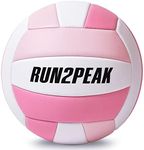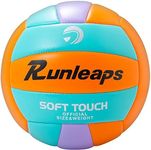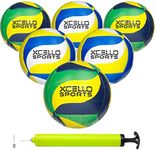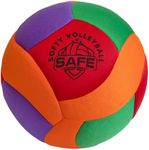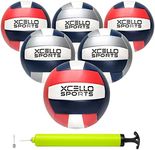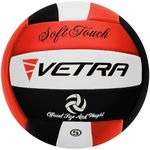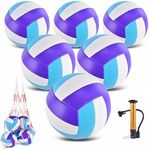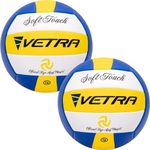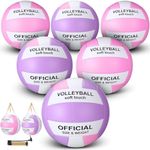Buying Guide for the Best Indoor Volleyball For Kids
Choosing the right indoor volleyball for kids is crucial to ensure they have a fun and safe experience while playing. The right volleyball can help them develop their skills, enjoy the game, and avoid injuries. When selecting a volleyball, consider factors such as size, weight, material, and durability. Understanding these key specifications will help you make an informed decision that best suits the needs of the child.SizeThe size of the volleyball is important because it affects how easily kids can handle and control the ball. Volleyballs come in different sizes, typically ranging from size 4 to size 5. Size 4 volleyballs are smaller and are generally recommended for younger children (under 12 years old) as they are easier to grip and control. Size 5 volleyballs are standard adult size and may be suitable for older kids or those with more advanced skills. Choose a size that matches the child's age and skill level to ensure they can play comfortably and effectively.
WeightThe weight of the volleyball is another critical factor, as a ball that is too heavy can be difficult for kids to handle and may cause strain or injury. Lighter volleyballs are designed specifically for younger players, making it easier for them to serve, pass, and spike the ball. Standard volleyballs weigh between 9 to 10 ounces, but for kids, you might want to look for a ball that is slightly lighter, around 7 to 8 ounces. This lighter weight helps kids develop their skills without the risk of overexertion.
MaterialThe material of the volleyball affects its durability, feel, and performance. Volleyballs are typically made from synthetic leather or genuine leather. Synthetic leather volleyballs are more common for indoor play and are often softer and more forgiving on young players' hands. They are also more affordable and durable, making them a good choice for kids. Genuine leather volleyballs are used in professional play and offer a better feel and performance but may be too harsh for young players. For kids, a synthetic leather volleyball is usually the best option.
DurabilityDurability is an important consideration, especially for kids who may be rougher on their equipment. A durable volleyball will withstand frequent use and last longer, providing better value for money. Look for volleyballs with reinforced stitching and high-quality materials that can endure the wear and tear of regular play. Reading reviews and checking product descriptions can help you gauge the durability of a volleyball. Choosing a durable ball ensures that it will hold up well over time, even with enthusiastic play.
